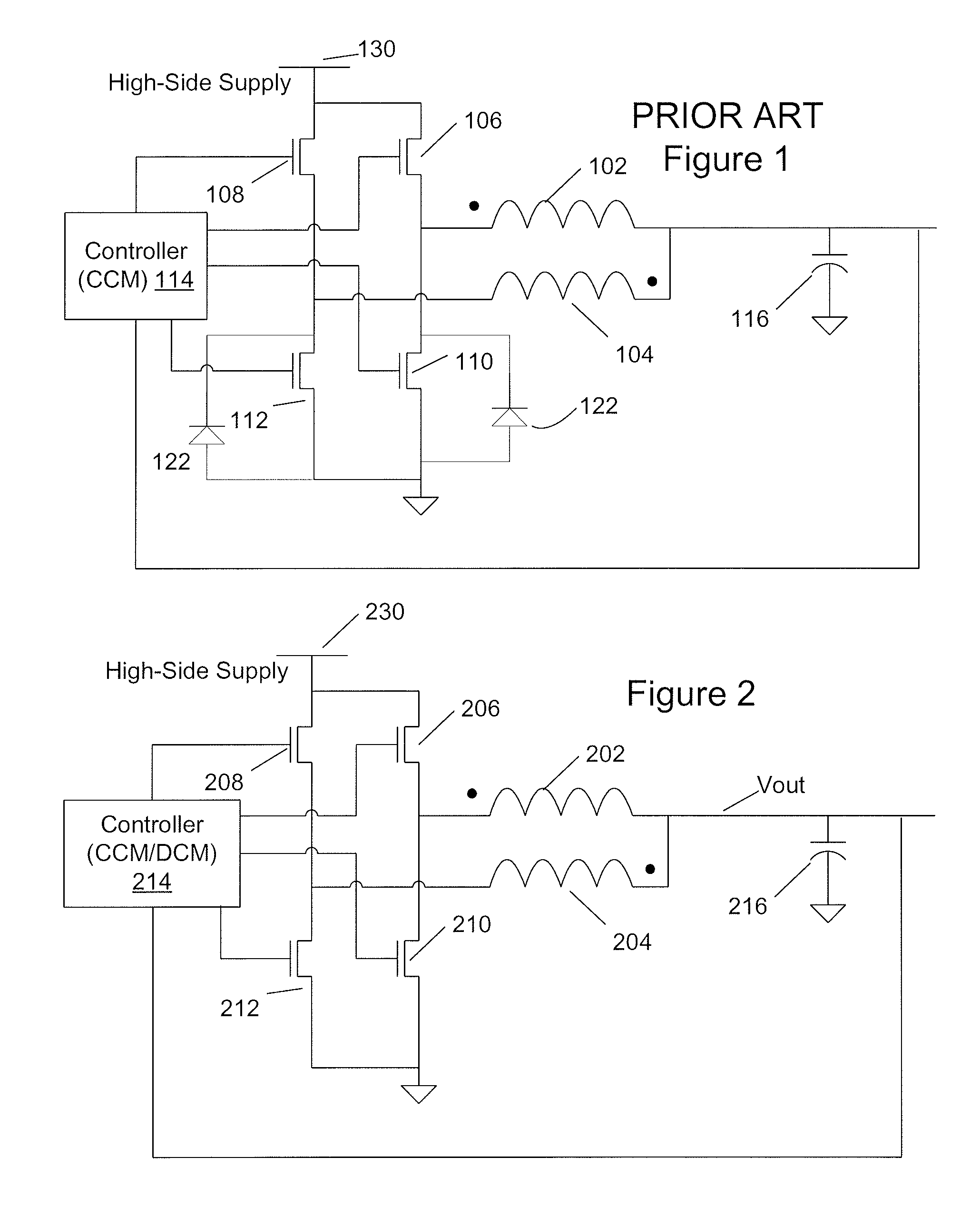Method and apparatus for multi-phase DC-DC converters using coupled inductors in discontinuous conduction mode
a technology of coupled inductors and converters, which is applied in the direction of dc-dc conversion, power conversion systems, instruments, etc., can solve problems such as power losses, and achieve the effect of high efficiency
- Summary
- Abstract
- Description
- Claims
- Application Information
AI Technical Summary
Benefits of technology
Problems solved by technology
Method used
Image
Examples
Embodiment Construction
[0020]A two-phase buck-type voltage converter as described in U.S. Pat. No. 6,362,986 to Schultz (FIG. 1) has first 102 and second 104 magnetically coupled inductive windings. This converter has first 106 and second 108 high-side switches, typically implemented as high speed switching transistors, which in an embodiment are P-channel MOS transistors but in alternative embodiments are implemented as N-channel MOS, PNP-bipolar, or NPN-bipolar devices. This converter also has first 110 and second 112 low-side switches, a controller 114, and an output filter having at least one capacitor 116.
[0021]The prior-art voltage converter of U.S. Pat. No. 6,362,986 operates in continuous conduction mode (CCM). During CCM operation controller 114 monitors an output voltage at capacitor 116. In periodic steady-state, controller 114 produces pulses by turning on alternately one of the first 106 or second 108 high-side switches, which connect to the high side supply voltage 130, thereby building a cu...
PUM
 Login to View More
Login to View More Abstract
Description
Claims
Application Information
 Login to View More
Login to View More - R&D
- Intellectual Property
- Life Sciences
- Materials
- Tech Scout
- Unparalleled Data Quality
- Higher Quality Content
- 60% Fewer Hallucinations
Browse by: Latest US Patents, China's latest patents, Technical Efficacy Thesaurus, Application Domain, Technology Topic, Popular Technical Reports.
© 2025 PatSnap. All rights reserved.Legal|Privacy policy|Modern Slavery Act Transparency Statement|Sitemap|About US| Contact US: help@patsnap.com



